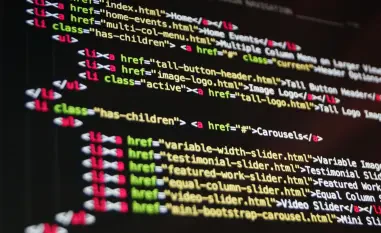Recent technological advancements such as artificial intelligence (AI), quantum computing, and the Internet of Things (IoT) are dynamically reshaping the cybersecurity landscape in profound ways. These technologies, while offering numerous benefits, also introduce new vulnerabilities and amplify the complexity of defending against cyber threats. To navigate this rapidly evolving world, it is vital for organizations to understand these emerging technologies and adopt proactive measures to counter the threats they pose.
Emerging Technologies and Cybersecurity Threats
Artificial intelligence (AI) has revolutionized the cybersecurity domain by significantly enhancing defense mechanisms, but it has also become a double-edged sword. Not only can AI be used to improve security protocols, but adversaries are leveraging it to create sophisticated, automated, and adaptive attacks. The expertise involved in crafting deepfake-based scams and highly proficient automated phishing emails serves as a stark reminder that AI can be weaponized just as effectively as it can be used for defense. For example, 43% of IT and security professionals in the UK recognize generative AI technologies as major threats, particularly in manipulating or generating deceptive content, making it critical to stay ahead of such trends.
Moreover, quantum computing, though still in its nascent stages, is poised to disrupt existing cryptographic protocols by potentially cracking widely-used encryption algorithms. The prospect of quantum computing necessitates an urgent shift towards quantum-safe cryptography to ensure future data security. In addition to AI and quantum computing, the proliferation of IoT devices poses substantial risks. Due to inadequate security standards, IoT devices expose various environments to large-scale attacks, particularly with the rise of remote workforces. These growing vulnerabilities call for improved IoT security practices to prevent large-scale breaches. Blockchain technology, while fundamentally secure, has its own challenges, as vulnerabilities in smart contracts have made it a target for cyberattacks. Proactive measures like adopting quantum-safe cryptography, enhancing IoT security protocols, and leveraging AI for preemptive threat detection are necessary steps to safeguard against these emerging threats.
Convergence of Cyber and Physical Threats
Integrating operational technology (OT) with IT systems in critical infrastructure sectors such as power grids, water supplies, and healthcare introduces dual risks that are increasingly being exploited by cybercriminals. Cyberattacks on these integrated systems can disrupt essential services, impacting the availability of materials, production lines, and even causing physical harm. This convergence of cyber and physical threats necessitates a comprehensive approach to security, one that neither sector can ignore if they aim to maintain balanced and uninterrupted operations across the board.
Organizations should adopt a holistic security approach that combines both cyber and physical security protocols. This entails establishing integrated risk management frameworks, conducting joint threat assessments, and employing real-time monitoring tools for anomaly detection. By doing so, they can better anticipate and mitigate the risks associated with the convergence of these threats. Additionally, regulatory compliance plays a crucial role in addressing these dual risks. Industries must adhere to regulations like NIS2 and CAF, which mandate minimum cybersecurity standards to protect against financial, operational, and societal repercussions that can result from cyber-physical threats. Strict compliance and proactive planning enable organizations to not only meet regulatory requirements but also to fortify their unified defensive fronts against complex, blended threats.
Preparing for Quantum Computing Threats
Quantum computing represents a significant upcoming cybersecurity challenge, anticipated to become a more prominent concern within the next 5–10 years. This advanced form of computing has the potential to break currently trusted encryption algorithms such as RSA and ECC, making today’s encrypted data vulnerable. To stay ahead, organizations should begin transitioning to quantum-resistant encryption standards, which are being developed by authoritative bodies like the National Institute of Standards and Technology (NIST).
In preparation for quantum computing threats, organizations must inventory their cryptographic assets to understand what information is at risk. Gaining awareness on post-quantum cryptography and incorporating quantum-resistant measures are essential steps in this process. Proactive and early preparation is crucial to avoid reactive and potentially costly measures as quantum computing technology continues to evolve. By taking these forward-thinking steps now, companies can ensure that their data remains secure against future quantum computing threats, safeguarding their sensitive information and maintaining secure transactions in the digital economy.
Addressing the Cybersecurity Skills Gap
A global shortage of cybersecurity professionals underscores the need for a multi-faceted approach to bridge the skills gap in this critical field. Organizations must prioritize continuous training programs for their existing staff to keep their skills current in an ever-evolving threat landscape. Collaborating with educational institutions to develop relevant and up-to-date curricula is another key strategy, as it ensures a steady pipeline of future cybersecurity experts equipped with the necessary skills. Offering apprenticeships and internships can further attract budding talent and provide hands-on experience in real-world scenarios.
Furthermore, leveraging advanced technologies like AI and machine learning for automating repetitive tasks can free up security professionals for more complex problem-solving activities. Implementing managed detection and response (MDR) models and engaging third-party support can augment internal capabilities and help mitigate immediate skill shortages. Additionally, expanding hiring practices to encourage diversity can tap into a broader talent pool and address the gender disparity in the field. By fostering an inclusive environment, organizations can strengthen their workforce and improve their overall security posture in the face of evolving cybersecurity challenges.
Global Preparedness for Cybersecurity Threats
Recent technological advancements such as artificial intelligence (AI), quantum computing, and the Internet of Things (IoT) are significantly transforming the cybersecurity landscape. While these technologies offer numerous advantages, they also introduce new vulnerabilities and increase the complexity of defending against cyber threats. AI can automate threat detection and response, but it can also be used by attackers to create more sophisticated attacks. Quantum computing promises unprecedented processing power, which could eventually break current encryption methods but is still in its infancy. IoT devices, though convenient, often lack robust security measures, making them potential entry points for hackers.
Organizations need to understand these technologies and adopt proactive strategies to counter the new threats. This includes staying updated on the latest developments, investing in advanced security solutions, and regularly training employees on cybersecurity best practices. By doing so, they can better navigate the dynamic world of cybersecurity and protect their sensitive data. Staying ahead in this rapidly changing environment is crucial for maintaining security and resilience against cyber attacks.













